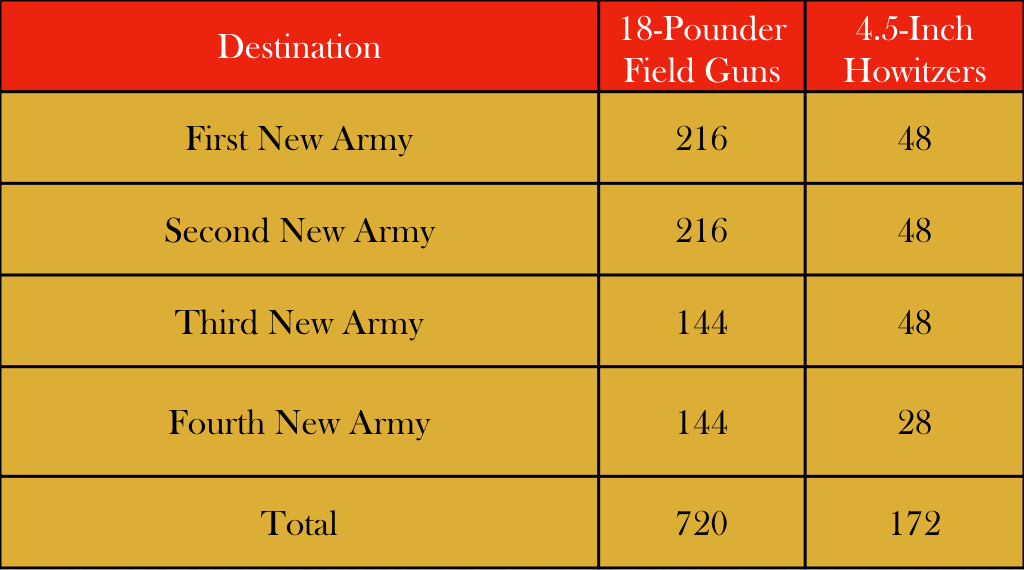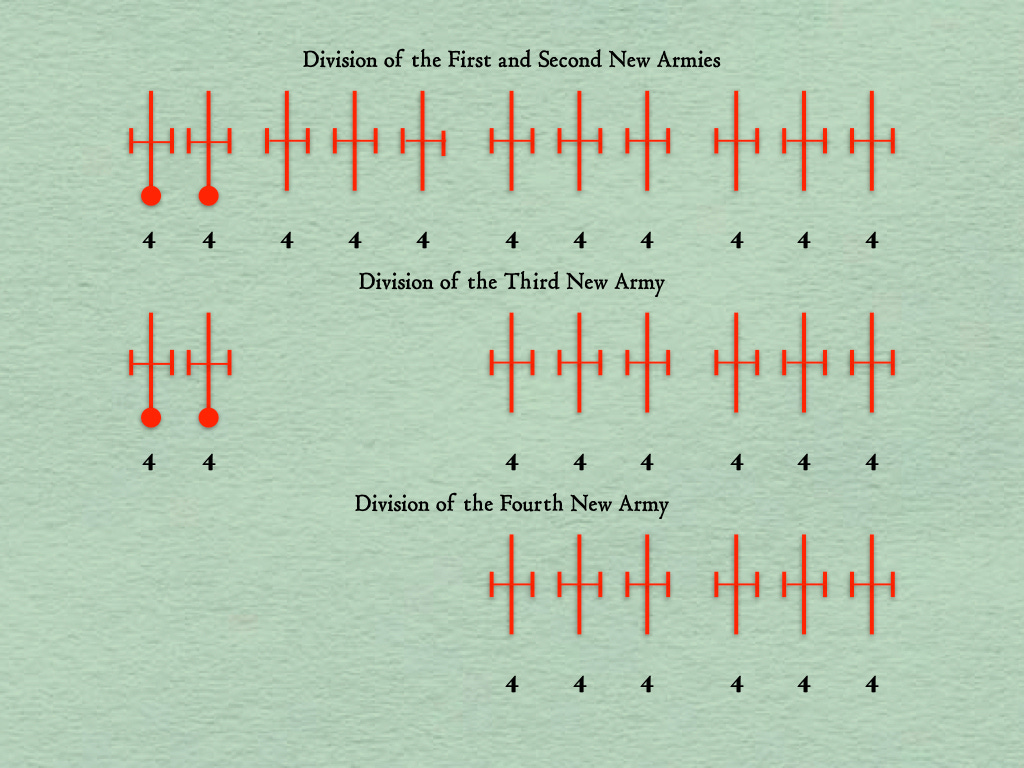The formation of the five improvised divisions exhausted the supply of Regular Army field artillery batteries. It also left the authorities at home with very few spare artillery pieces of the types employed by the original Expeditionary Force. As most of these were needed for such purposes as training, maintenance and the replacement of casualties, very few were available for issue to new formations. Thus, formations composed of units other than those of the pre-war Regular Army had to make do with weapons set aside for special purposes in the years before the war.
The fourteen infantry divisions initially mobilized by the Territorial Force employed the obsolescent weapons already in their possession.1 The divisions provided by Australia, New Zealand and Canada made use of the small number of modern field pieces purchased by their governments. Likewise, the divisions provided by the Indian Army for service on the Western Front augmented their meagre artillery establishments with batteries taken from formations remaining on the Subcontinent.2 The New Army divisions, however, had no pre-existing supply of artillery pieces and would therefore have to wait until new weapons emerged from the factories.3
During the second week of the war, the War Office was sufficiently optimistic about the capabilities of British gun foundries that it authorized artillery establishments for New Army divisions that were identical to those of the Regular Army divisions formed before the war. (This was also in keeping with the idea that New Army divisions should resemble, to the greatest degree possible, the infantry divisions of the original Expeditionary Force.)4 Indeed, the only cautionary note in these plans was the proviso that each New Army field battery be initially formed with four guns or howitzers, with the two remaining pieces to be delivered as soon as they emerged from the factories.5
By the first week of September, however, the War Office had become less sanguine about its ability to provide ordnance to New Army divisions and thus began to entertain alternatives to its original plan. One of these, drafted for the director of artillery, suggested that the number of pieces in each battery be reduced from six to four.6 In addition, it recommended that the number of batteries in each division vary by seniority, with the first divisions to be formed getting much more artillery than the last. 7 Nonetheless, as the deployment of the first of the New Army divisions was still several months away, the War Office made no changes to the establishments of those formations.
This article belongs to a series, the other installments of which can be found by means of the following links.
British Infantry Divisions (1914-1918) (I)
British Infantry Divisions (1914-1918) (II)
British Infantry Divisions (1914-1918) (III)
British Infantry Divisions (1914-1918) (IV)
British Infantry Divisions (1914-1918) (V)
British Infantry Divisions (1914-1918) (VI)
British Infantry Divisions (1914-1918) (VII)
The Territorial Force was an organization of part-time volunteers that had been formed to protect the British Isles from ‘such invaders as may be able to evade the fleet.’ When mobilized, its members served on the same terms as soldiers of the Regular Army, with the important reservation that they could not be sent overseas without their explicit consent. The quotation is from The Royal Review at Worsley, a souvenir booklet prepared for a review of the East Lancashire Division of the Territorial Force in 1909.
Becke, Order of Battle of Divisions, Part 1; F. W. Perry, Order of Battle of Divisions, Part5B, (Newport, Gwent: Ray Westlake, 1993) and War Diary, 1st Canadian Divisional Artillery, Archives Canada, RG 9 (III-D-3), Volume 4958, Reel T-10775
The New Armies were the “waves'“ of entirely new infantry divisions raised in the late summer and autumn 1914. The First New Army was composed of the first six of these divisions to be formed. The Second, Third, Fourth and Fifth New Armies were likewise the second, third, fourth and fifth six-division groups to be created. Closely associated with Field Marshal Herbert H. Kitchener, 1st Earl Kitchener of Khartoum (1850-1916), then Secretary of State for War, the New Army divisions were largely composed of men who had joined the Regular Army under a special program that allowed them to enlist for “for a period of three years or until the war is concluded.”
Army Council, Minutes and Précis, 1914-1916, TNA, WO 163/21
Minutes for the Meeting of the Military Members of the Army Council, 13 August 1914 and 9 September 1914, TNA, WO 163/44
The director of artillery was one of the three principal subordinates of the master general of the Ordnance. Owen Wheeler, The War Office, Past and Present, (London: Methuen and Company, 1914), page 300.
Artillery for K Armies, TNA, WO/161/22








